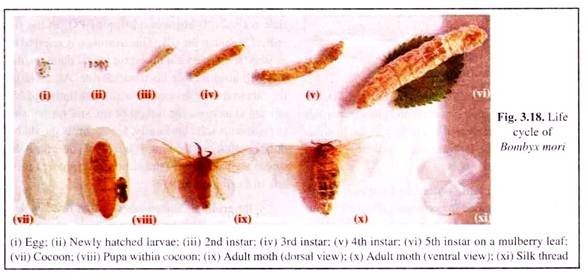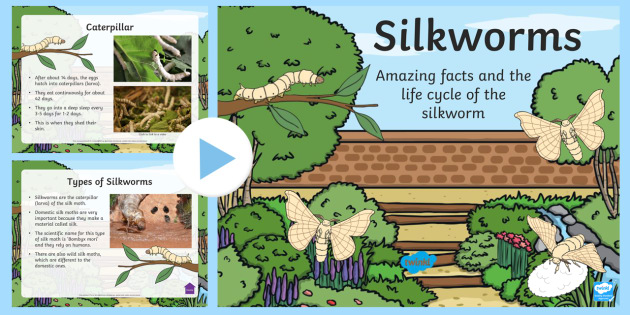Bombyx Mori Life Cycle

Life Cycle of real Silk Moth specimen encased in a set of 5 separate rectangular and square indestructible, transparent lucite block. Safe, authentic and completely unbreakable product put real silk moth life cycle right at your fingertips! Anyone can safely explore the specimens from every angle. It is clear enough for microscope observation. Exploring the cultivated silk moth Bombyx mori. Part II: Further microscopical studies of aspects of the life cycle with notes on Leeuwenhoek's observations. By David Walker, UK. SEM imagery courtesy of Oliver Meckes, 'Eyes of Science'. In Explorer browser, setting 60% in 'Print Preview' prints out on 9 sheets of A4 paper.
A silkworm spinning a cocoon. Kim Taylor/Nature Picture LibraryAn adult silkworm has a wingspan of 40 to 50 mm (about 2 inches) and has a thick bristly body (the adult female is larger than the adult male). It typically is blond to light brown in colour, with thin dark bands running across the body. The wings are cream-coloured and have dark veins extending out to the margins. Mouthparts in adults are reduced or absent, so in their brief adulthood of two or three days, they do not eat.
They cannot fly, either. Males, however, perform a flutter dance, a mating ritual induced by females’ secretion of a known as bombykol. Females lay about 300 to 500 eggs, which hatch within roughly 7 to 14 days when kept at temperatures of 24 to 29 °C (about 75 to 85 °F).
Bionics: silkworm moths and butterflies Bionics researchers studying silkworm moths and butterflies. Contunico © ZDF Enterprises GmbH, MainzNewly hatched are approximately 2 to 3 mm (0.08 to 0.12 inch) long and have voracious appetites. Besides its natural food of leaves, silkworm also eat the foliage of the or lettuce. The pale larva has a characteristic posterior (caudal) horn. It attains a maximum length of 75 mm (about 3 inches) during a 45-day growing period.

Mario party 8 online pc. Pupation occurs within a that is made of one continuous white or yellow strand of averaging about 915 metres (1,000 yards) long. This filament is preserved intact for commercial use by killing the with hot air or steam.
Silkworms whose genomes have been genetically modified through the introduction of spider silk produce silk that is stronger, tougher, and more elastic than that produced by domesticated silkworms.